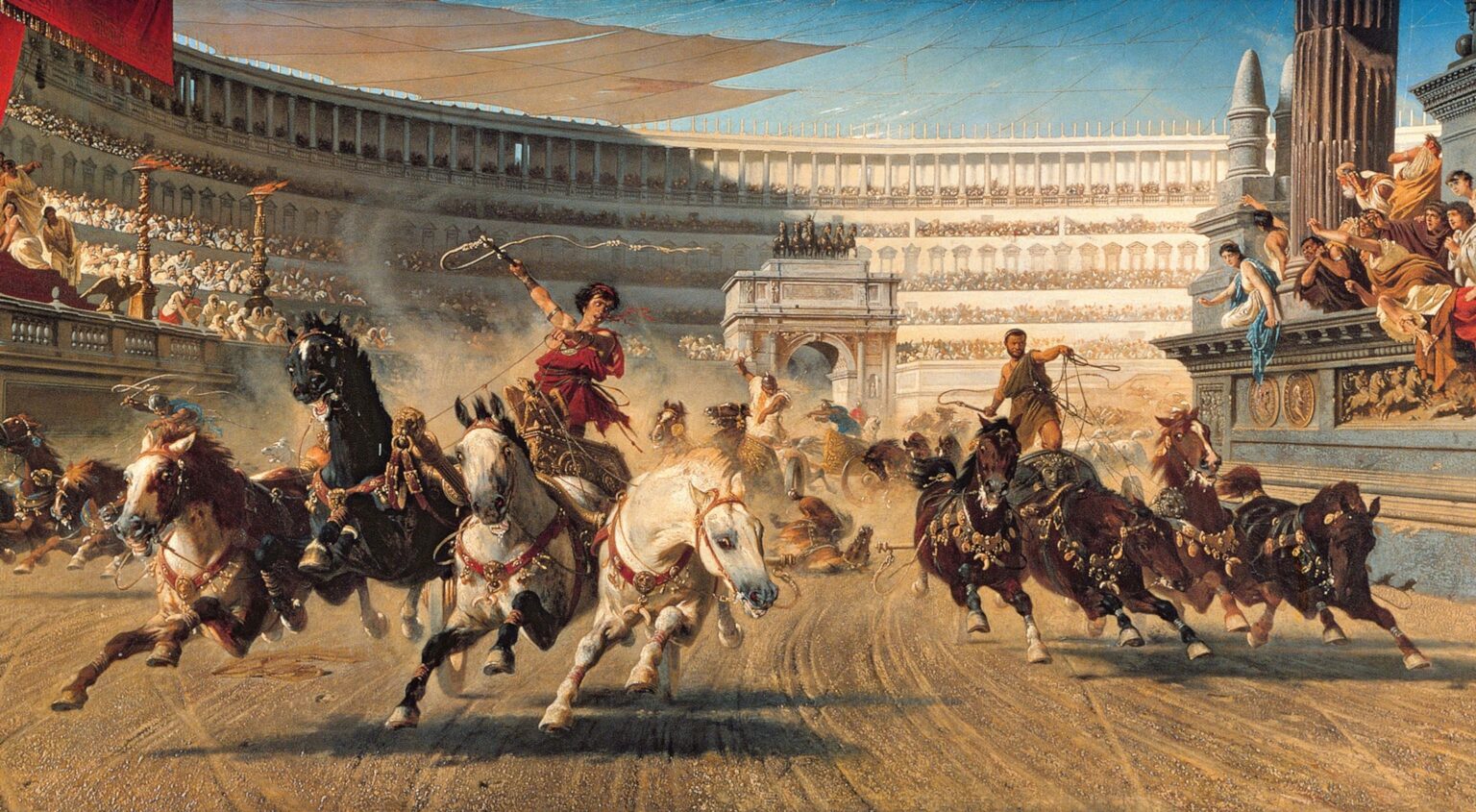Chariot racing was the pulse of ancient Rome, captivating millions with its blend of speed, skill, and peril. As the empire’s most popular and dangerous sport, it drew vast crowds to massive arenas like the Circus Maximus, where charioteers risked life and limb for glory and fortune. This article explores the thrilling world of chariot racing, examining its roots, the fierce competition among rival factions, and the cultural significance that made it a defining spectacle of Roman entertainment.
The Thrilling Spectacle Behind Ancient Rome’s Chariot Races
In the heart of Ancient Rome, chariot racing was not just a sport-it was a vivid display of skill, daring, and unrelenting competition. Held in monumental venues like the Circus Maximus, races attracted tens of thousands of spectators who roared for their favorite factions, known as factiones. These teams were distinguished by colors-Reds, Blues, Greens, and Whites-and inspired fanatical loyalty among the masses. The spectacle involved swift, lightweight chariots drawn by teams of four horses, hurtling around the track at breakneck speeds, often risking catastrophic crashes. The danger was palpable; charioteers faced fierce rivalries and the constant threat of deadly collisions, which added to the sport’s intoxicating blend of excitement and peril.
Key elements fueling the thrill included:
- High-speed turns around tight corners that tested a charioteer’s reflexes.
- Strategic alliances and fierce rivalries between factions, heightening tension.
- The use of whips and reins to control horses at extreme speeds.
- The massive crowds whose chants and jeers energized the racers.
| Aspect | Description | Impact on Race |
|---|---|---|
| Chariot | Lightweight, two-wheeled vehicle | Allowed swift acceleration and sharp movements |
| Horses | Four-horse teams (quadrigae) | Provided immense speed, critical for victory |
| Track | Oval-shaped, approx. 600 meters long | Demanded precision in navigating turns |
| Factions | Colored teams with devoted fanbases | Fueled fierce competition and public passion |
The Perilous Lives of Charioteers and Their Gladiatorial Courage
Charioteers in ancient Rome were more than mere athletes; they were gladiators of the racetrack, displaying extraordinary bravery in the face of mortal danger. These skilled drivers raced lightweight chariots pulled by four horses, hurtling around the Circus Maximus at breakneck speeds that often exceeded 40 miles per hour. The peril was constant: crashes, horse collisions, and fiery wrecks were frequent, and survival required razor-sharp instincts and nerves of steel. Unlike many other Roman sports, a charioteer’s life was always on the line, turning each race into a sensational spectacle of courage and skill admired by millions of fervent spectators.
Behind the scenes, charioteers endured grueling training regimes, physical punishment, and fierce competition for glory and wealth. Their reputations were built on heart-stopping wins, but also on dramatic crashes that could end their careers or lives. Despite the danger, some charioteers achieved celebrity status rivaling that of Roman politicians and generals. The following table highlights key attributes of the perilous sport they mastered:
| Aspect | Detail |
|---|---|
| Average Race Speed | 35-40 mph |
| Number of Horses per Chariot | 4 (Quadriga) |
| Primary Causes of Fatalities | Collisions, Horse Falls, Chariot Flips |
| Training Regimen | Endurance, Reflexes, Horse Handling |
| Most Favored Faction Colors | Red, Blue, Green, White |
- High Risk-High Reward: Successful charioteers amassed great wealth and influence.
- Public Adulation: Fans often identified deeply with their favorite factions.
- Gladiatorial Spirit: Constant danger forged rivalries as fierce as those in the arena.
How Modern Audiences Can Appreciate the Legacy of Roman Chariot Racing
Modern audiences can connect with the adrenaline and spectacle of Roman chariot racing by recognizing its impact on both ancient society and contemporary entertainment. The sport wasn’t merely a competition; it was a complex event steeped in politics, social hierarchy, and fervent fandom. Today, the echoes of those roaring crowds and high-stakes drama resonate in modern sports arenas, where passion, rivalry, and risk continue to captivate millions. By exploring the cultural significance and the intricate strategies behind chariot racing, enthusiasts gain deeper appreciation for how it shaped public life in Rome and laid the groundwork for modern spectacles.
Understanding the key elements that made chariot racing so thrilling helps bridge the gap between past and present. Consider these aspects that highlight the sport’s enduring legacy:
- Team Allegiances: Just as fans today champion their favorite football or soccer teams, Romans passionately supported factions like the Reds, Blues, Greens, and Whites.
- High Risk, High Reward: The perilous nature of the races, combined with fame and fortune for successful charioteers, mirrors modern professional athletes’ dedication and ambition.
- Mass Entertainment: The Circus Maximus, accommodating over 150,000 spectators, was the ancient equivalent of today’s largest stadiums, demonstrating the scale of public enthusiasm.
| Aspect | Ancient Rome | Modern Parallel |
|---|---|---|
| Fan Factions | Reds, Blues, Greens, Whites | Sports Teams’ Fanbases |
| Venues | Circus Maximus (150,000+) | Largest Stadiums |
| Competition Type | High-speed chariot racing | Motorsports & Horse Racing |
| Player Fame | Celebrity charioteers | Professional Athletes |
Concluding Remarks
As one of ancient Rome’s most thrilling and perilous spectacles, chariot racing captivated audiences across the empire, blending high-speed competition with significant risk for both racers and horses. Though the sport eventually faded from prominence, its legacy endures-offering a vivid glimpse into Roman society, entertainment, and the enduring human appetite for adrenaline-fueled contests. Today, chariot racing remains a powerful symbol of the grandeur and danger that defined the spectacle-driven culture of ancient Rome.

